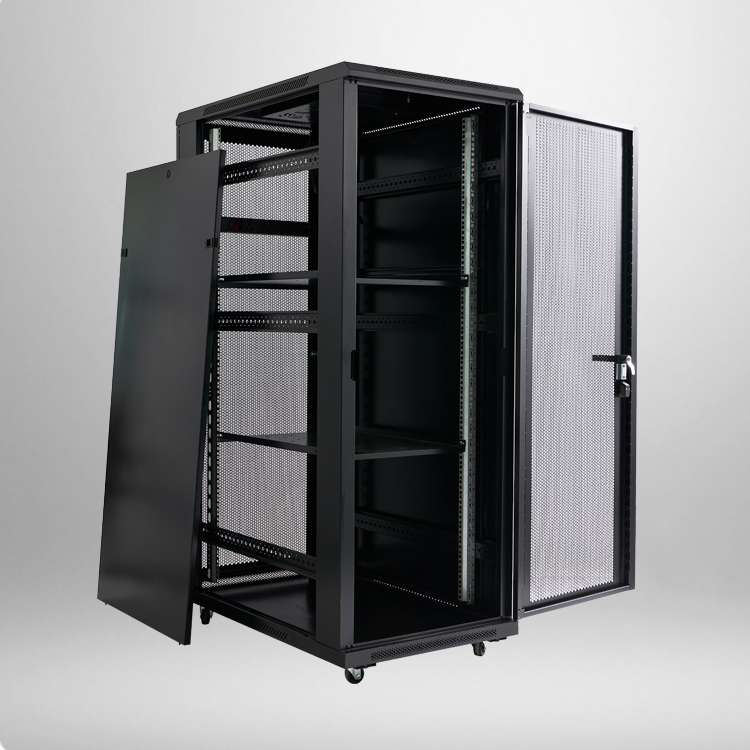
Choosing the best server cabinet is crucial for ensuring optimal performance and organization in a data center or server room. A well-designed and properly chosen server cabinet can provide secure storage, effective cable management, efficient cooling, and easy accessibility. This article will guide you through the process of selecting the best server cabinet for your needs.
- Determine the size and capacity requirements: Start by assessing the number and size of the servers and equipment you need to accommodate in the cabinet. Consider the future growth of your IT infrastructure as well. Measure the height, width, and depth of the equipment to ensure a proper fit. Take into account the weight capacity as well, especially if you have heavy servers or equipment.
- Evaluate the security features: Security is of utmost importance when it comes to protecting sensitive data and preventing unauthorized access. Look for server cabinets with locking mechanisms, ideally with both front and rear doors. Consider cabinets with a tamper-proof design and integrated alarm systems. Additionally, choose cabinets with solid construction to deter any physical breaches.
- Consider cooling and ventilation: Computers generate a significant amount of heat, so it’s crucial to choose a server cabinet that provides efficient cooling and ventilation. Look for cabinets with built-in airflow management features, such as perforated doors and adjustable fan mounts. Consider cabinets with cable management features that allow for proper airflow through the cabinet.
- Assess cable management options: Proper cable management is essential for easy equipment installation, maintenance, and troubleshooting. Look for server cabinets with ample cable management options, such as cable management bars, brush strips, cable rings, and cable trays. These features will help you organize and route cables neatly, reducing the risk of airflow obstruction and cable tangling.
- Consider accessibility and ease of maintenance: Choose a network server cabinet that allows easy access to equipment for installation, maintenance, and repairs. Look for cabinets with removable side panels, easily adjustable mounting rails, and front and rear door openings. Consider cabinets with swing handles or removable doors that provide full access to the equipment when needed.
- Evaluate rack unit (RU) measurements: Rack units are a standardized unit of measurement used in server cabinets. Consider the RU measurements you require for your equipment. Typical server cabinets range from 42U to 48U, but smaller cabinets are also available. Ensure that the cabinet provides sufficient RU space for your current and future equipment needs.
- Consider noise reduction features: If your server room or data center is located in a shared workspace or office environment, noise reduction is essential. Look for server cabinets with soundproofing features, such as acoustic foam insulation or noise reduction materials. Cabinets with sealed doors and proper airflow management can also contribute to noise reduction.
- Evaluate the quality and durability: Choose server cabinets that are built with high-quality materials and solid construction. Cabinets made of steel or aluminum are widely used for their durability. Check for any quality certifications, such as ANSI/EIA RS-310-D or RoHS compliance. Consider cabinets with a warranty, ensuring the manufacturer stands behind their product.
- Consider modular and scalable options: If you anticipate future growth and expansion of your IT infrastructure, consider server cabinets that offer modular and scalable options. Look for cabinets with adjustable mounting rails and modular accessories that can be easily added or removed as needed. This will save you from having to replace the entire cabinet in the future.
- Check for compatibility with accessories: Consider the compatibility of the server cabinet with accessories such as shelves, power distribution units (PDUs), cable management panels, and patch panels. Ensure that the cabinet has sufficient mounting options and attachment points for these accessories. Compatibility with industry-standard accessories ensures easy integration and compatibility with your existing infrastructure.


